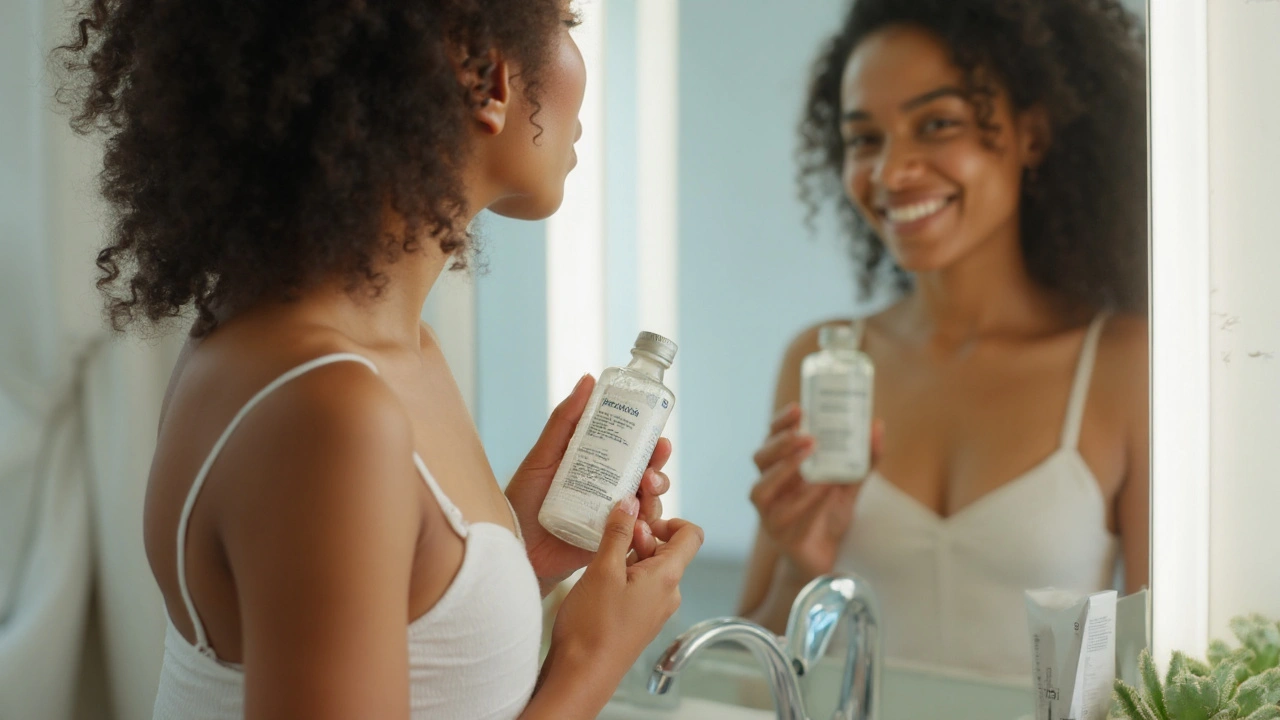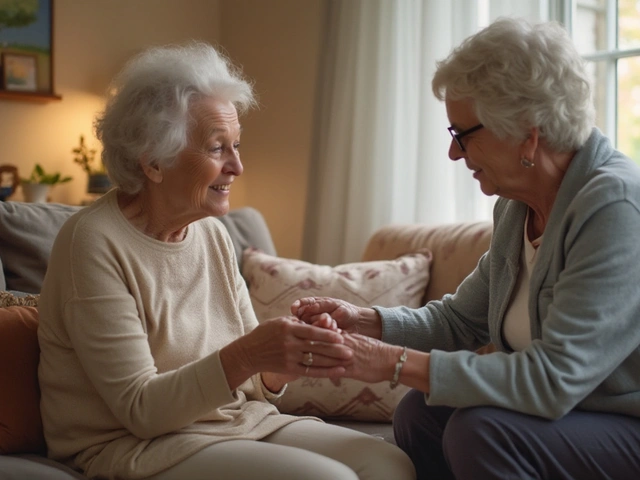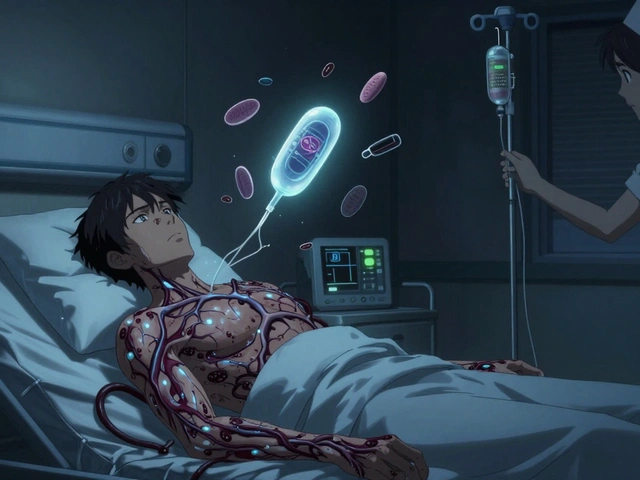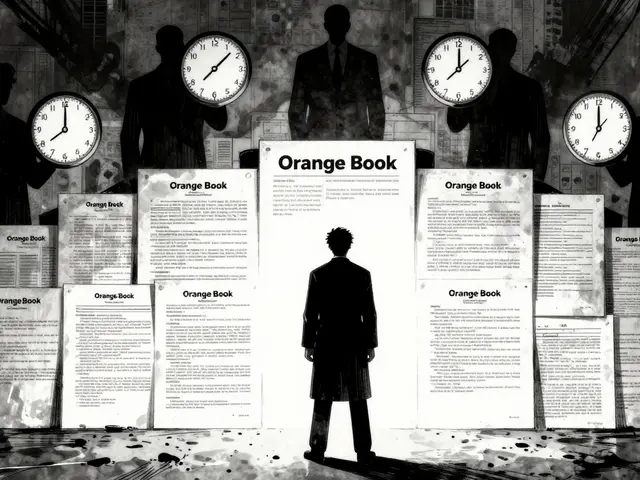TL;DR - The Essentials
benzoyl refers to a chemical group most people encounter as benzoyl peroxide, a common acne fighter. It kills bacteria, unclogs pores, and reduces inflammation. Use a 2.5-5% formula, start slow, and moisturize to avoid dryness. It works best for mild‑to‑moderate acne and is safe when you follow the guidelines.
What Is Benzoyl? Chemistry and Everyday Forms
Benzoyl is a functional group (C₆H₅CO‑) found in many compounds. In cosmetics, the star player is benzoyl peroxide (BPO), a white, crystalline solid that releases oxygen when applied to skin. That oxygen bursts open the anaerobic pores where Cutibacterium acnes (formerly Propionibacterium acnes) thrives, effectively starving the bacteria.
Beyond skincare, benzoyl derivatives appear in fragrances, plastics, and even medicines (e.g., benzoyl benzoate for scabies). But for most readers, the focus is on its role in dermatology.
Key properties of benzoyl peroxide:
- Oxidizing agent - releases free radicals that break down bacterial cell walls.
- Keratolytic - helps shed dead skin cells, keeping pores clear.
- Stability - remains effective in creams, gels, and washes for months.
Skincare Uses of Benzoyl Peroxide
When you browse a pharmacy aisle, you’ll see “Benzoyl Peroxide 2.5% Gel” or “5% Acne Treatment Cream”. These are the most common over‑the‑counter (OTC) formats. Here’s how they work in practice:
- Kill acne‑causing bacteria: The oxygen release creates an environment where C. acnes can’t survive.
- Reduce inflammation: By limiting bacterial growth, the skin’s inflammatory response calms down, leading to less redness.
- Unclog pores: The keratolytic action loosens the dead‑cell plug that forms comedones (whiteheads and blackheads).
Typical usage patterns:
- Spot treatment: Apply a pea‑sized dot directly on a blemish once daily.
- All‑over treatment: Use a thin layer over the entire affected area, usually once in the morning or evening.
Clinical studies from 2022‑2024 show that 2.5% formulations achieve similar clearance rates to 5% but with significantly fewer side‑effects (dryness, irritation). That’s why many dermatologists start patients on the lower concentration.

Safe Application Tips - Getting the Best Results Without the Burn
Even a “harmless” OTC product can cause trouble if you misuse it. Follow these steps to keep your skin happy:
- Patch test first: Apply a tiny amount on your jawline or forearm for 24hours. If no redness or itching occurs, you’re good to go.
- Start slow: Use every other day for the first week. If tolerance is good, increase to daily.
- Cleanse gently: Wash your face with a mild, sulfate‑free cleanser. Pat dry - no rubbing.
- Apply a thin layer: More isn’t better. A thin film is enough for the oxygen‑release mechanism.
- Moisturize: Choose a non‑comedogenic moisturizer (e.g., hyaluronic acid‑based) after the BPO layer has absorbed (about 5‑10minutes).
- Sun protection: Benzoyl peroxide can increase photosensitivity. Use SPF30+ daily.
Common pitfalls and how to avoid them:
- Over‑application: Thick layers cause severe dryness and peeling.
- Mixing with other actives: Avoid using retinoids or strong exfoliants (AHAs/BHAs) at the same time - they can compound irritation. Apply them at opposite times of day if you must.
- Neglecting moisturiser: Skipping hydration leads to barrier damage, making acne worse.
Benzoyl Peroxide vs. Other Acne Actives - A Quick Comparison
Choosing the right acne weapon depends on your skin type, severity, and lifestyle. Below is a side‑by‑side look at the most popular options.
| Active | Primary Mechanism | Typical Concentrations | Best For | Common Side‑Effects |
|---|---|---|---|---|
| Benzoyl Peroxide | Oxidizing (oxygen release) + keratolytic | 2.5% - 10% | Mild‑to‑moderate inflammatory acne | Dryness, peeling, mild erythema |
| Salicylic Acid (BHA) | Oil‑soluble exfoliant | 0.5% - 2% | Blackheads, oily skin, non‑inflamed lesions | Stinging, dryness |
| Retinoids (e.g., adapalene) | Cell turnover acceleration | 0.1% - 0.3% | Comedonal & inflammatory acne, anti‑aging | Peeling, photosensitivity |
| Azelaic Acid | Antibacterial + keratolytic | 10% - 20% | Rosacea, post‑inflammatory hyperpigmentation | Mild irritation, itching |
If you’re new to acne treatment, start with benzoyl peroxide 2.5% and add a BHA or retinoid later, spacing applications to minimise irritation.
Quick FAQ - Your Follow‑Up Questions Answered
- Can I use benzoyl peroxide on my whole face? Yes, but start with a small area and watch for irritation.
- Is it safe during pregnancy? Current data suggest low systemic absorption, but always check with your GP.
- Why does my skin turn white after applying? The peroxide can bleach fabric and hair; the white hue on skin is temporary and fades as it dries.
- How long before I see results? Most users notice reduced redness and fewer new spots within 1‑2 weeks; clear skin may take 4‑8 weeks.
- Can I combine it with vitamin C? Vitamin C is best applied in the morning before sunscreen, while benzoyl peroxide can be used at night to avoid pH conflicts.

Next Steps - Building a Routine That Sticks
Now that you know the basics, here’s a simple three‑step nightly routine for acne‑prone skin:
- Cleanse with a gentle, sulfate‑free foaming wash.
- Apply a thin layer of 2.5% benzoyl peroxide to problem areas.
- Follow with a lightweight, oil‑free moisturizer containing ceramides.
Stick with it for at least six weeks before deciding if you need to adjust concentration or add another active. Consistency wins over quick fixes.











Stephen Maweu
21 Sep 2025 at 05:37broke out bad last winter and tried the 2.5% bpo on a whim... holy crap it actually worked. no more angry red bumps. just remember to moisturize or your face will feel like sandpaper. also, don't use it with that fancy vitamin c serum at the same time lol